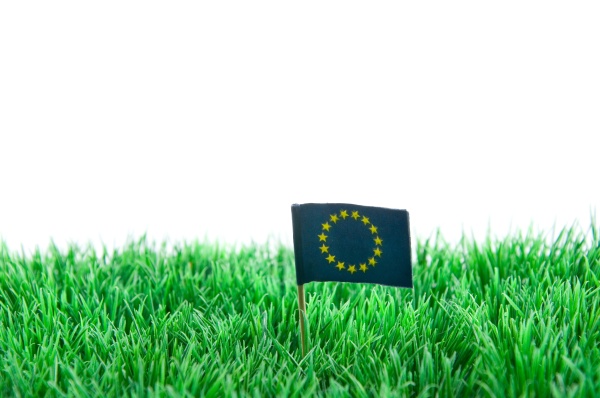Inspect First - Then Refurbish
In recent years, the number of artificial pitches used to practise sports has continued to increase, largely replacing old surfaces such as ...


YOUR FORUM FOR PLAY, SPORTS UND LEISURE AREAS

More than four years after the European Chemicals Agency (ECHA) published its proposal to restrict microplastic emissions, the EU Commission proposed in a committee meeting on the EU REACH Regulation in April 2023 to include microplastics in Annex XVII of the Regulation and to regulate them more strongly with immediate effect. The Member States’ delegations also agreed to this in April. This paves the way for implementation
The Commission also directly addresses the issue of granular infill material used on artificial turf pitches and decides to ban their placing on the market after a transitional period of 8 years. The official regulation once again sums up the development process.
On 29 January 2019, the Agency published the Annex XV dossier where it concludes that the intentional use of synthetic polymer microparticles, resulting in releases to the environment, poses a risk to the environment that is not adequately controlled and needs to be addressed on a Union-wide basis. Regarding the subject of granular infill for use on artificial turf pitches, the following is required in this context (original text from the Regulation):
“(19) The Annex XV dossier assessed several restriction options for granular infill for use on synthetic sports surfaces and suggested either a ban on the placing on the market with a transitional period of 6 years, without exemptions, or a ban on the placing on the market with a transitional period of 3 years, with an exemption from that ban in case of use of specific risk management measures ensuring that annual releases of synthetic polymer microparticles from a synthetic sports pitch do not exceed 7 g/m2.”
On 3 June 2020, ECHA’s Committee for Risk Assessment (RAC) adopted an opinion on the Annex XV dossier. With regard to granular infill material, it reads as follows:
“(30) With regard to the placing on the market of infill material for use on synthetic sports surfaces, taking into account considerations of emissions reduction, practicality and enforceability, RAC expressed a clear preference for a ban on the placing on the market after a transitional period over an exception from the ban conditional on the implementation of risk management measures. The main reason for RAC’s preference was that infill material for use on synthetic turf sport surfaces is the largest contributor in terms of use of microplastics in products as well as the largest source of environmental emissions of intentionally-present synthetic polymer microparticles at European level. RAC had also concerns regarding the effectiveness of the proposed risk management measures, in particular in relation to existing sport surfaces and smaller size particles. It also stated that it does not endorse the referred limit of 7 g/m2/year as any sort of acceptable threshold, as this on its own still implies substantial releases to the environment on a continued basis.”
In the end, the EU Commission decided the following:
“(53) For granular infill for use on synthetic sports surfaces, the Commission considers that increasing the transitional period for the ban on placing on the market to 8 years is justified in order to ensure that a larger number of existing synthetic sport surfaces using this product can reach their natural end-of-life before they need to be replaced.”
Ultimately, synthetic granular infill material was banned, as expected. The Commission even extended the originally proposed transitional period to 8 years to prevent existing artificial turf pitches from being subjected to compulsory refurbishment at an earlier stage. It remains to be seen, however, whether these two additional years really make a difference. After all, the life span of an average artificial turf pitch is 15 years.
Sports field operators now have to deal with this decision. This is not a big problem for pitches that will have to be refurbished in the next 8 years anyway, as the market now offers numerous alternatives for synthetic sports turf. For all other pitches, solutions will have to be found. Even if many sports fields have already been built without using synthetic granular infill since 2019/2020, there will still be a large number that would theoretically have to be "compulsorily rebuilt" after 8 years. Presumably, however, the solution will be to store large stocks of granular infill material It is, of course, questionable whether this is what the EU Regulation was actually intended for. Some artificial turf systems, however, can also be replaced with natural granular infill without having to be converted.
It would certainly have been more sensible to establish a regulatory regime to the effect that, from a certain day x, synthetic granular infill may no longer be used after an artificial turf surface has been replaced. This would have solved the whole problem sooner or later. For, as mentioned in this context in a previous article, any artificial turf surface that is replaced sooner than necessary also represents a large mass of waste that has to be disposed of. Sustainability and environmental protection don't seem to play much of a role, which somewhat reduces the intention of the current regulation to absurdity. And why possible short-term filter solutions in the drainage system to curb emissions were simply "brushed aside" remains just as much of a mystery as the fact that cosmetic products such as lipsticks and make-up, which have a significantly shorter life span, have a longer transitional period of 12 years to become "microplastic-free" than synthetic turf pitches. Not to mention that the regulation directly affects the sporting activities of millions of EU citizens.
Even if there has now been a decision after four years of negotiation, in the end sport loses. It is good that there are now many good alternative solutions on the market that enable people to continue practising sports on synthetic sports surfaces.
TT